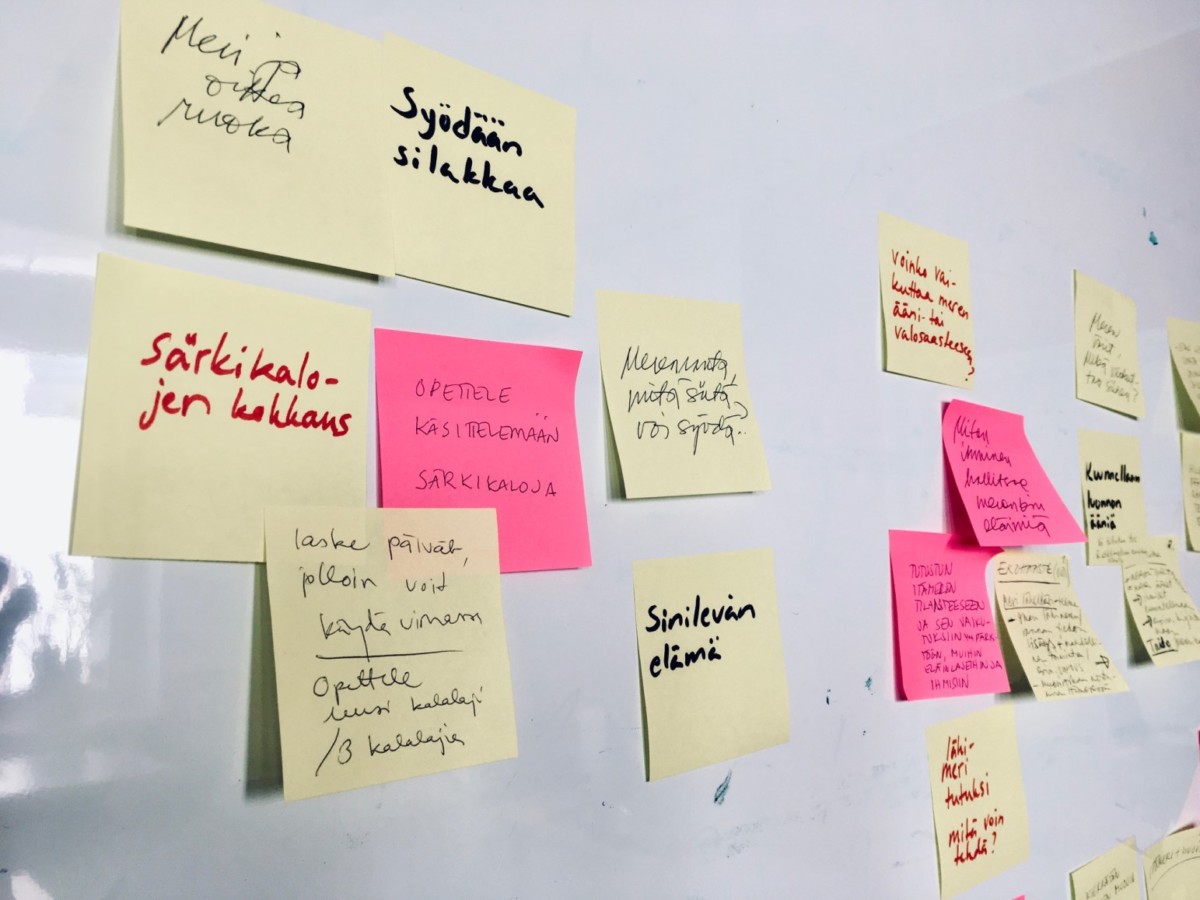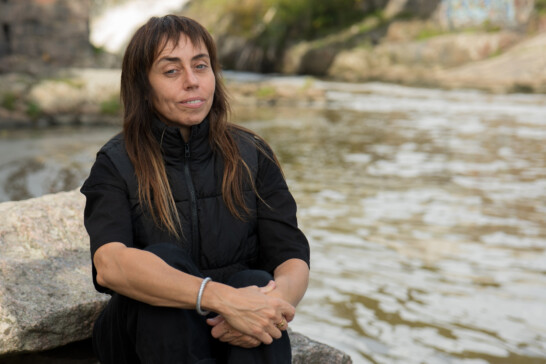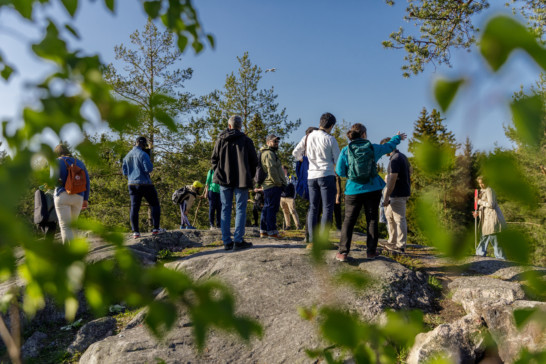News
IHME Panel: Art Delights and Eco-Actions

IHME’s Client Panel is a group of volunteers who are interested in contemporary art, science and environmental issues. The Panel has met twice this year. Several panellists recalled their own experiences of previous IHME commissions, with the enormous clay cube in Antony Gormley’s Clay and the Collective Body from 2009 particularly sparking an interest in IHME.
A glimpse into the future
The IHME Panel serves as an interface between IHME and the public, receiving advance information about forthcoming works and other programme events. At the March meeting members got a preview of the plans for the 2020 Commission and heard about the venue for Jana Winderen’s sound work: the Rowing Stadium.
Winderen’s audio work highlights the state of the Baltic Sea. The Rowing Stadium is an ideal spot for listening to a sound piece on the theme of the Baltic, since the thing itself – the sea – is right there in front of the grandstand. Panel members were delighted with the choice of location. Some were already familiar with it as a stage for hymn-singing events and operetta performances, but many had no previous experience of the Stadium, which is rarely open to the public.
Multiple eco-actions
Inspired by the forthcoming work panellists tried to think of eco-actions that everyone can do in their own everyday lives to help protect the Baltic Sea. In a lively discussion they voiced a desire to get tips on how to act responsibly for the good of the Baltic. Besides information, one thing they wanted was to find out how eating roach and other cyprinid fish reduces eutrophication. They were also worried about plastic getting into the sea, something that can, for instance, be affected by shopping habits.
As there are a lot of different ideas on offer, the panel decided that the most important eco-action is ultimately one that everyone is motivated to adopt. Just as an artwork is open to various possible interpretations depending on who is experiencing it, different actions that benefit the Baltic Sea suit different people. Instead of a single eco-action, it was decided to get panel members to come up with a way in which anyone could set their own eco-challenge and also share it to inspire others.
IHME will be sharing the tips that it has gleaned over the spring and summer for protecting the Baltic Sea and, later in the spring, we will be publishing details of how to participate in a joint challenge involving Baltic Sea Actions. Before all this starts, it is worth taking a look, for instance, at the eco-coordinator’s tips for reducing your carbon footprint and at the thoughts on the state of the Baltic Sea that researcher Seppo Knuuttila spoke of in his interview with Jana Winderen.

